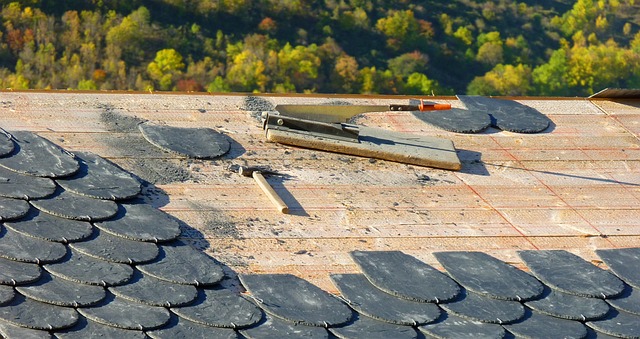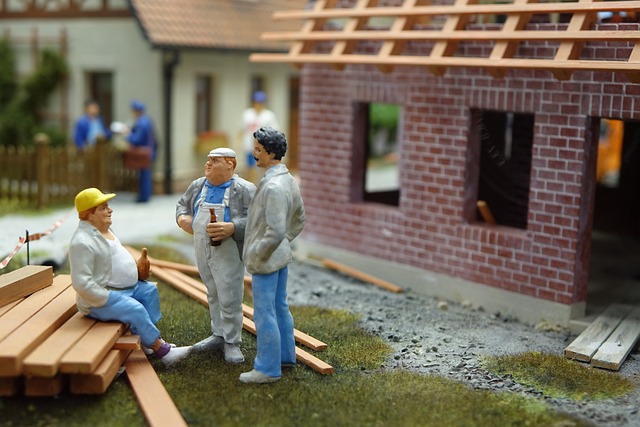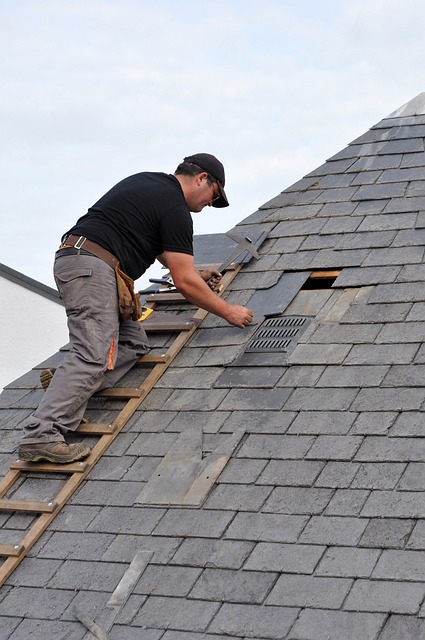Roofers play a critical role in upholding safety, structural integrity, and legal compliance for roofing projects by adhering to local building codes. These professionals must be well-versed in the nuances of these codes, which are designed to protect public welfare, ensure readiness for fires and emergencies, and promote energy efficiency. Their knowledge is crucial for proper material selection, effective roof design, and safe installation practices. Non-compliance with these regulations can lead to legal penalties, financial losses, and unsafe structures. To maintain compliance, roofers should interact with local building departments, attend workshops, and frequently consult code manuals. This proactive approach not only prevents future issues but also solidifies their reputation for reliability and professionalism within the community. The role of a roofer extends to working alongside architects and builders to ensure that all roofing work meets current standards, particularly in regions where severe weather demands robust roofing systems that are up to code for long-term performance and safety.
When embarking on a roofing project, adherence to local building codes and regulations is non-negotiable. This article delves into the critical aspects of understanding and complying with these mandates, ensuring the structural integrity and safety of your property. Professionals in the field play a pivotal role in this process. By exploring “Understanding Local Building Codes and Their Implications for Roofing Projects” and highlighting “The Role of Professional Roofers in Ensuring Compliance with Building Regulations,” we provide valuable insights into the intricacies involved in maintaining compliance while tackling roofing endeavors. Homeowners and contractors alike will benefit from this guidance to navigate the complex landscape of regulatory requirements responsibly.
- Understanding Local Building Codes and Their Implications for Roofing Projects
- The Role of Professional Roofers in Ensuring Compliance with Building Regulations
Understanding Local Building Codes and Their Implications for Roofing Projects

Roofers play a pivotal role in ensuring that all aspects of roofing projects comply with local building codes and regulations. A deep understanding of these codes is not merely an academic exercise but a practical necessity to safeguard safety, longevity, and functionality of the structures they cover. Building codes are designed to establish minimum standards for building construction, including roofing systems, to protect public health and safety, ensure safety in case of fire or other emergencies, and ensure energy efficiency. Roofers must be well-versed in these regulations as they pertain to materials, installation methods, and the overall design of a roof. This knowledge is critical because it influences the choice of materials, the slope of the roof, and the necessary precautions to take during construction or repair. Non-compliance with local building codes can lead to fines, legal disputes, and even compromise the structural integrity of the building, potentially leading to costly repairs or, in severe cases, collapse. Therefore, roofers must consistently stay informed about updates to these codes to ensure their work meets all requirements and that the end product is both safe and sustainable. Engaging with local building departments, attending workshops, and reviewing code manuals are practical steps roofers can take to maintain compliance and effectively integrate these regulations into their projects. This proactive approach not only avoids future complications but also contributes to a reputation of reliability and professionalism within the community.
The Role of Professional Roofers in Ensuring Compliance with Building Regulations

When it comes to ensuring compliance with local building codes and regulations, professional roofers play a pivotal role in the construction and maintenance of residential and commercial structures. Their expertise is not solely confined to the physical installation or repair of roofing systems; they must also be well-versed in the legal requirements that govern such projects. These professionals are responsible for staying updated on the latest building codes, which dictate everything from material specifications to safety standards. By adhering to these regulations, roofer’s ensure the structural integrity and safety of buildings, protecting both the occupants and the property itself from potential hazards.
Moreover, professional roofers work in tandem with architects, builders, and local building departments to guarantee that all roofing installations or renovations are up to code. They meticulously assess the design plans, suggest material options that comply with regulations, and implement best practices throughout the construction process. This collaborative approach not only facilitates compliance but also contributes to the longevity and performance of the roofing system. In regions where severe weather conditions are prevalent, the importance of a legally compliant roof cannot be overstated, as it acts as a critical barrier against natural elements. By entrusting the task of compliance to knowledgeable roofer’s, property owners can rest assured that their investment is both safe and secure.
In wrapping up our exploration, it’s clear that adherence to local building codes and regulations is a pivotal aspect of any roofing project. Professional roofers play an indispensable role in this process, ensuring that each installation or repair not only meets the safety and performance standards set forth by these guidelines but also contributes to the longevity and integrity of the structure it protects. Homeowners who engage with experienced roofers can rest assured that their investments are safeguarded, compliance is achieved, and their properties remain secure against environmental challenges. When undertaking a roofing project, it’s advisable to partner with a roofer who is well-versed in the nuances of local codes and regulations to ensure the best outcomes for your home or building.
